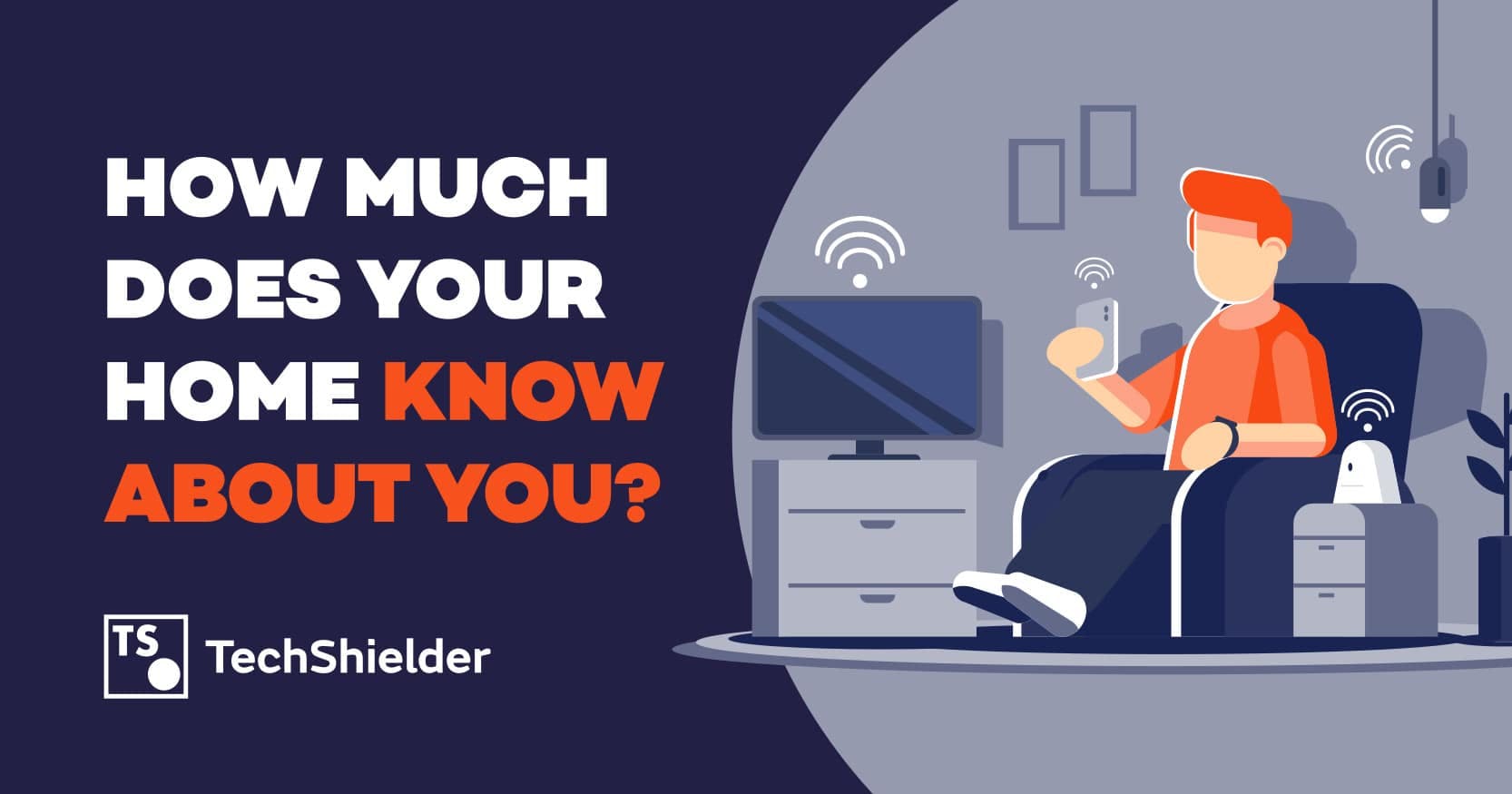How Much Does Your Home Know About You?
In recent years, there has been an increase in the number of smart devices we allow into our homes. From AI assistants like Alexa to security systems like Ring, we now live side-by-side with devices that have extensive insight into our online and offline lives.
Now more than ever there is an increased risk of third parties gaining access to, and stealing, personal data through smart home products. But just what, and how much, personal information is vulnerable to attack if we use these devices? And how can we best protect our privacy while using them?
To find out, TechShielder has analysed the most popular smart devices in our homes. Starting with a seed list of 50 recommended products, we used customer reviews to narrow down and reveal the ten most popular devices:
- Amazon Echo Dot (Alexa smart speaker)
- Chromecast with Google TV (smart TV assistant)
- Samsung SmartThings Hub (smart home hub)
- Nest Protect (smoke and CO alarm)
- Ring Indoor Cam (compact security camera)
- Levoit LV-PUR131S (smart air purifier)
- Sonos One (smart speaker)
- TP-Link Kasa Smart Plug (smart WiFi plug)
- Roborock S6 (smart vacuum cleaner)
- Philips Hue (smart lighting system)
We then analysed the terms and conditions of each product, along with information found on their brand websites and app stores, to discover the volume and types of data they store. Based on this, we identified the most common data points each device collects and created a ranking of the top 5 devices that know the most about their users.
What do smart home devices know about us?
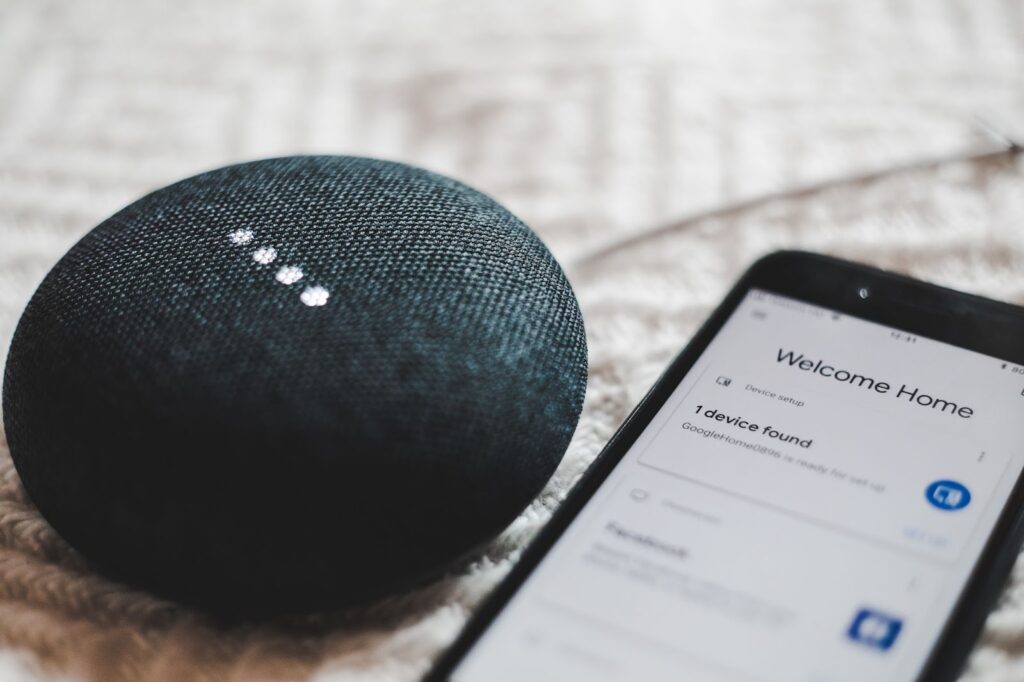
The table below shows the most common data points stored by 90-100% of the devices we researched:
| Data Category | Data collection points | Percentage of devices that store each data point |
| Personal data | Name | 100% |
| Personal data | Address | 100% |
| Personal data | Time-zone | 100% |
| Personal data | Phone Number | 100% |
| Personal data | 100% | |
| Online activity | IP address | 100% |
| Online activity | Location | 100% |
| Personal data | Information shared with 3rd parties | 90% |
| Online activity | Payment information | 90% |
| Device | Device type | 90% |
Unsurprisingly, all of the devices we analysed store personal data points that identify us as their owners. This information includes names, addresses, phone numbers, emails and time zones, as well as our IP address and location. 90% also collect data on our payment information.
While the collection of these personal data points is necessary and not uncommon, how they could be used to impersonate us is a valid privacy concern – especially when considered alongside the additional information a high proportion of these devices collect about us.
How using smart devices could put your identity at risk
According to our research, 70% of popular smart home devices record our voice as default. Half of these devices also have access to our photos, videos and profile images, while 40% document live videos of our homes and store our personal descriptions. This suggests that our smart home devices are building a comprehensive picture of what we look like, sound like and how we present ourselves.
The table below shows the volume of data on users’ voices, videos, images and personal descriptions stored by the devices we researched :
| Data Category | Data collection points | Percentage of devices that store each data point |
| Live data | Voice recording default | 70% |
| Files | Access to photos | 50% |
| Files | Access to videos | 50% |
| Online activity | User profile images | 50% |
| Live data | Video | 40% |
| Personal data | Personal Description | 40% |
Many of the smart home products we analysed also collect data on purchase history (70%), browsing history (50%), application use (40%), searches (40%) and personal interests (30%). This combined information could give our devices an understanding of the multiple queries and daily decisions that factor into our personalities.
The table below shows the volume of online and offline data indicating users’ personal interests stored by the devices we researched:
| Data Category | Data collection points | Percentage of devices that store each data point |
| Online activity | Purchase history | 70% |
| Online activity | Browsing history | 50% |
| Device | Application use | 40% |
| Online activity | Searches | 40% |
| Personal data | Personal Interests | 30% |
In the same way that a PC or laptop can be hacked, broken, or leak data to fraudsters, smart home devices are also vulnerable to attack. If cybercriminals were to get hold of the information these devices store, they would have an unsettling level of insight into who we are which could be used to carry out incredibly convincing identity theft and fraud.
If you’re concerned about how much your smart device is monitoring you, it may be possible to prevent certain types of identifying data from being stored by changing the settings of your device. The Amazon Echo Dot, for example, allows users to alter its settings to automatically delete voice recordings rather than store them.
The 5 most invasive smart home devices
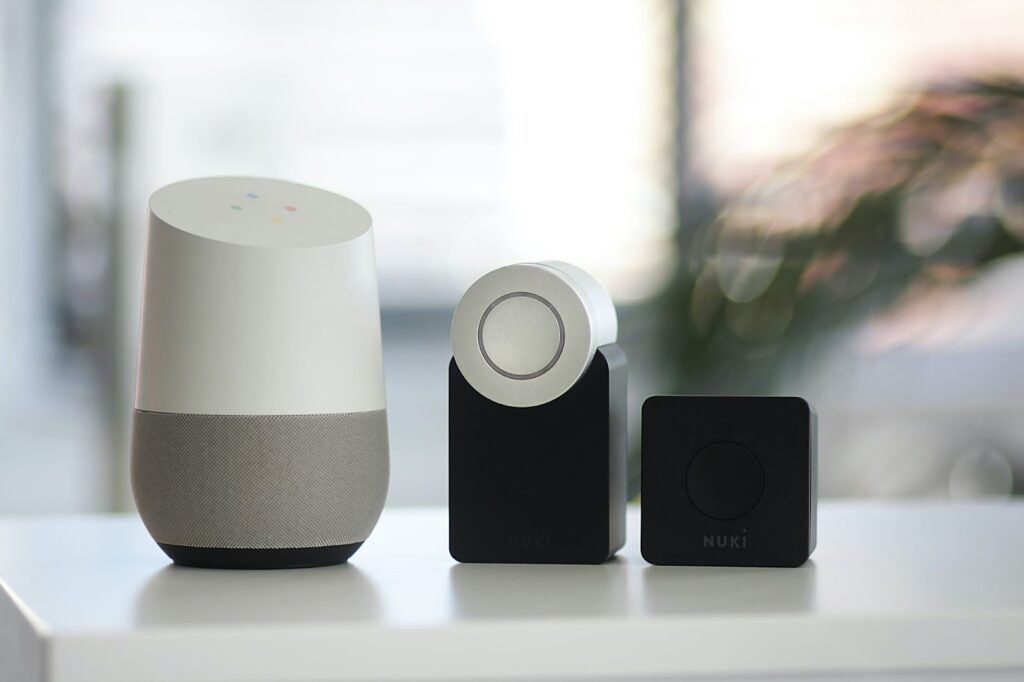
To gain a deeper insight into which home devices know the most about us – and therefore pose the most risk to our privacy – we analysed not just the type of information each device stores, but also how much.
The table below shows the five most invasive home devices based on the percentage of information they store across all of the following data categories: personal data, data about online activity, data about the device itself, data about user files, data about the home, data about contacts, and live data.
| Rank | Devices | Percentage of all data points stored per device |
| 1 | Amazon Echo Dot with Clock (Alexa smart speaker) | 43% |
| 2 | Chromecast with Google TV (smart TV assistant) | 42% |
| 3 | Samsung SmartThingsHub (smart home hub) | 37% |
| 4 | Nest Protect (smoke and CO alarm) | 34% |
| 5 | Ring Indoor Cam (compact security camera) | 26% |
Alexa knows more about you than any other popular smart home device
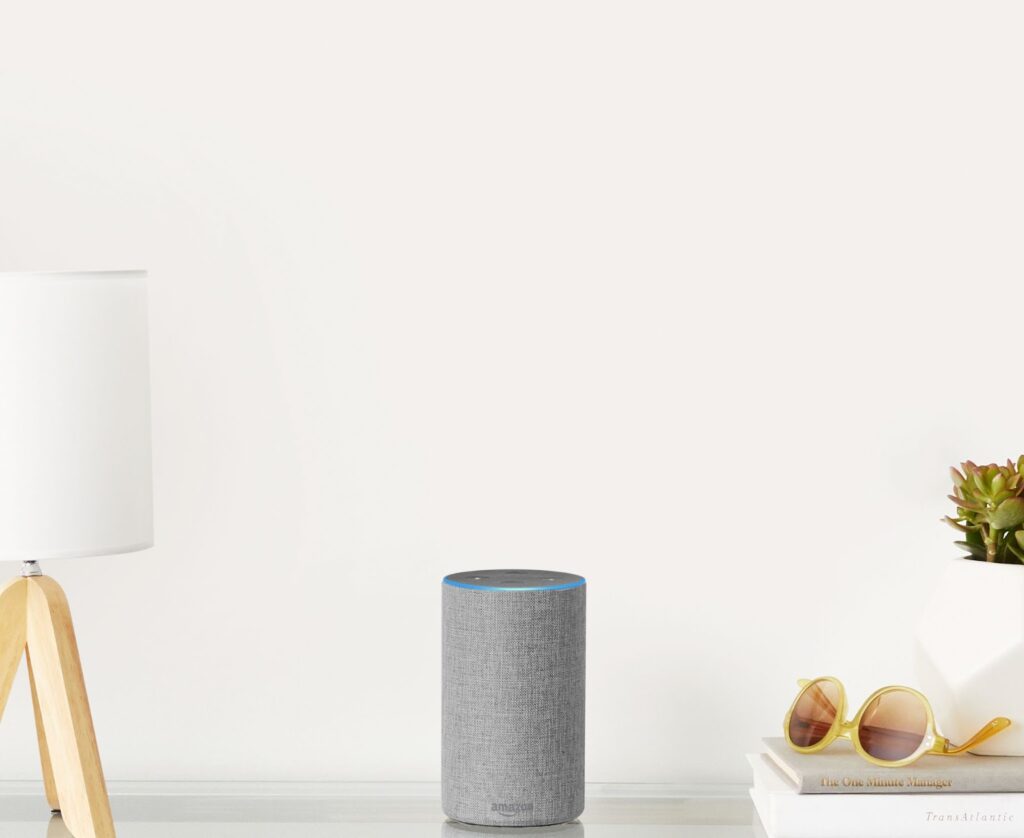
According to our analysis, the Amazon Echo Dot – commonly referred to as ‘Alexa’ – the name of its AI – is the smart device that knows the most about us. In comparison to other popular smart home devices analysed, this device stores the highest number of possible data points (43%) across all categories.
The Echo Dot stores personal information like our name and address, has access to our photo and video files, and stores live voice recording data. This device collects more information about our online activity than all other devices, including data such as browsing history, downloads and web searches. It is also one of only three devices (along with the SmartThings Hub and Chromecast) to store information about our contacts, such as their name or phone number.
It makes sense that a device like the Amazon Echo Dot stores the most data overall, as it is one of the most versatile products in the range we researched. While other devices like the Ring Indoor Camera (a smart security camera) and Nest Protect (a smart smoke and carbon monoxide alarm) are designed to accomplish a specific task, the Echo Dot serves more than one purpose: you can use it to make phone calls, control smart home features like lights and indoor temperature, operate your TV, and more.
As a consequence of its versatility, the Echo Dot also needs to store more data about us to provide the best service.
Chromecast knows what you look like, sound like and who your friends are
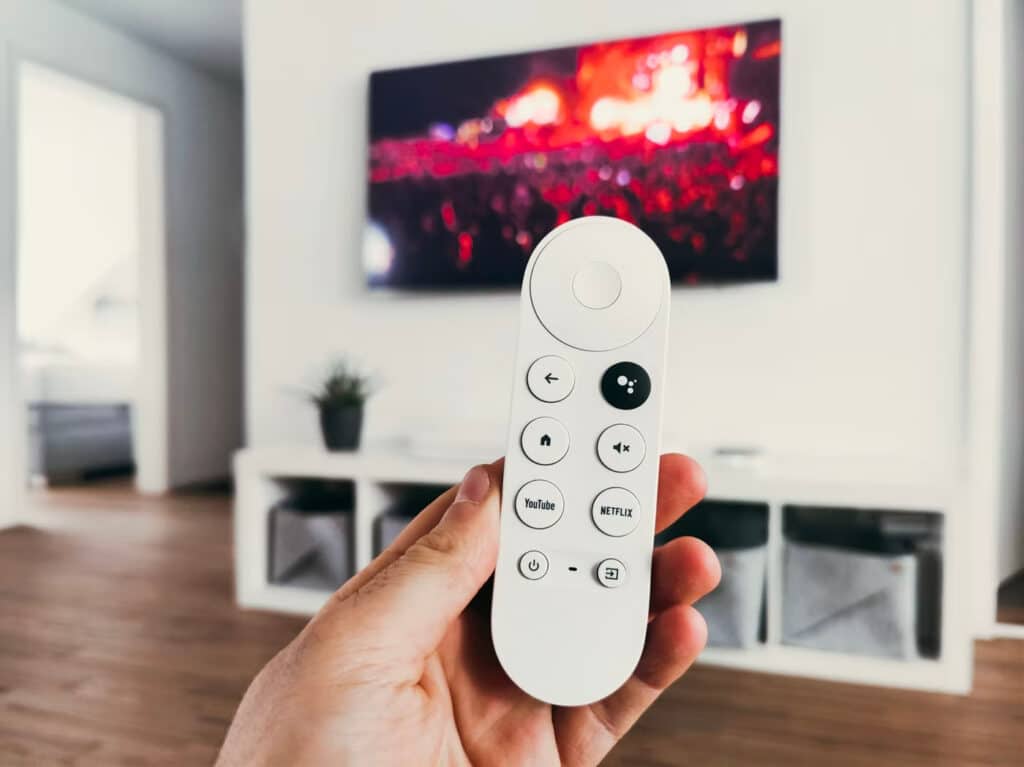
The Chromecast with Google TV comes in just behind the Echo Dot as the second most invasive smart home device. This smart TV remote stores 42% of all possible data points including personal information, photo and video files, voice recordings, online activity and contact information.
Although the Chromecast with Google TV is primarily a device used to control a television, it also offers additional features such as Google Assistant, which allows you to perform Google searches and control other compatible smart devices. This versatility may again explain why the device needs to store more data about us than other, less versatile devices.
Samsung SmartThings Hub can see you
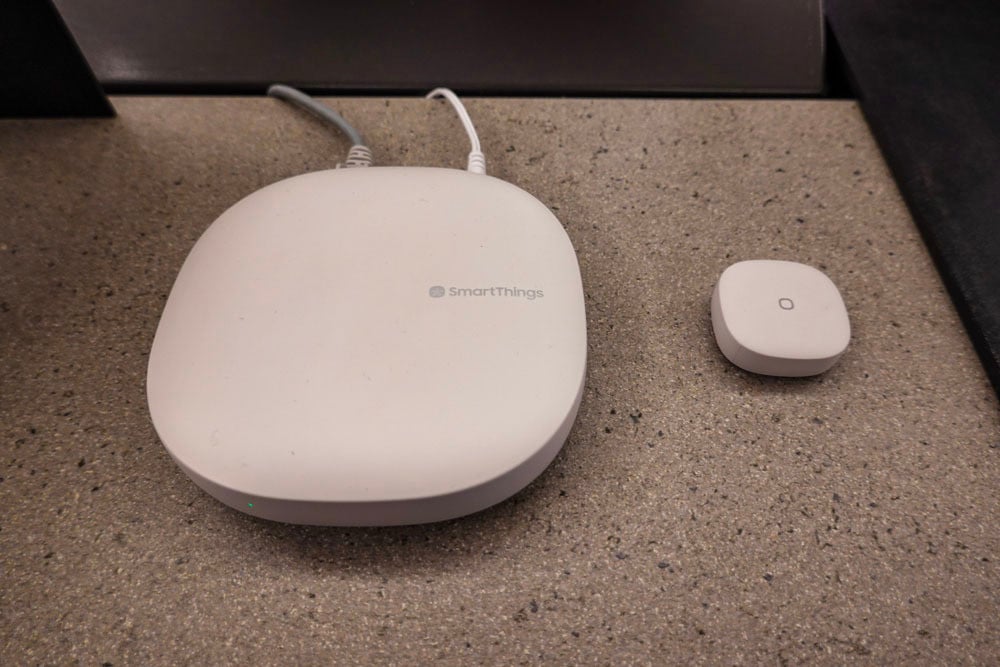
The Samsung SmartThings Hub stores the third highest amount of all possible data points at 37%. The data this device collects is very similar to the Echo Dot and Chromecast: personal information, photo and video files, online activity and contact information.
However, when it comes to live data, the SmartThings Hub stores more than the Echo Dot or Chromecast. Alongside voice recordings, the SmartThings Hub also collects live video data and motion detection, which may be concerning if you are uncomfortable with videos of your home being collected.
Because its primary function is to connect to other home devices – such as a smart camera – allowing you to operate all devices from a central hub, the data this device stores may vary depending on the other devices you link it to. If you have any privacy concerns surrounding video recording specifically, you may want to avoid connecting the SmartThings Hub to any device with a camera.
Nest Protect can hear you
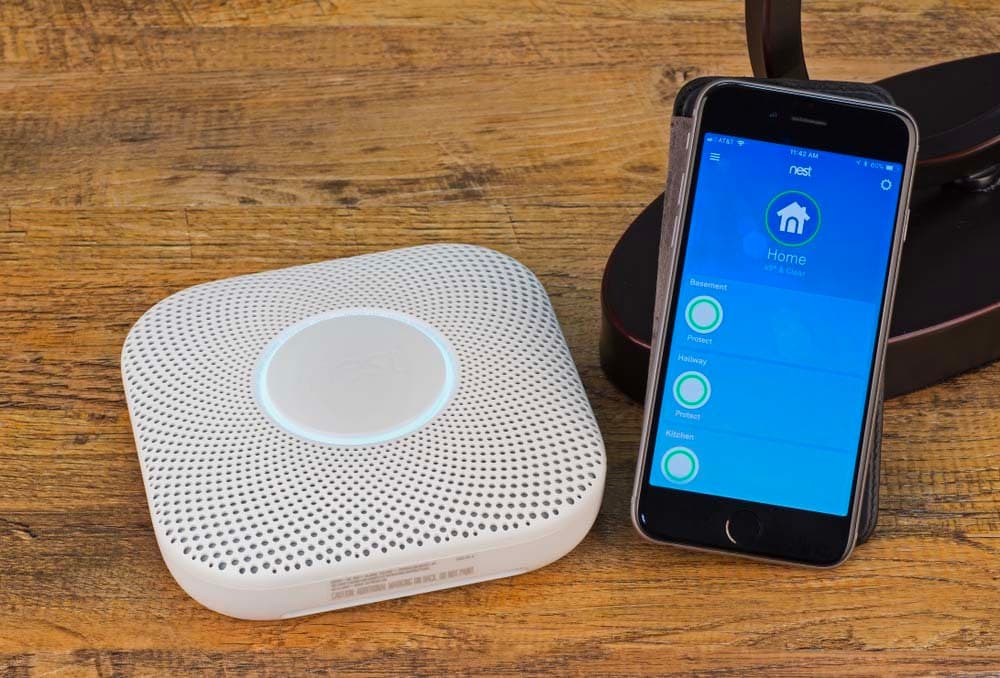
The Nest Protect stores 34% of all possible data points, including personal data, photos and videos. This product stores less information than the top three devices do. However, in terms of live data, in particular voice and video recordings, the Nest Protect stores the same amount as the third most invasive smart home device, the SmartThings Hub.
The product’s motion sensor feature – which causes the device to light up when it detects movement – is the reason for it storing video and audio information. You may be able to deactivate this feature in settings if you are concerned about privacy.
Ring Indoor Camera records every interaction that takes place in your home
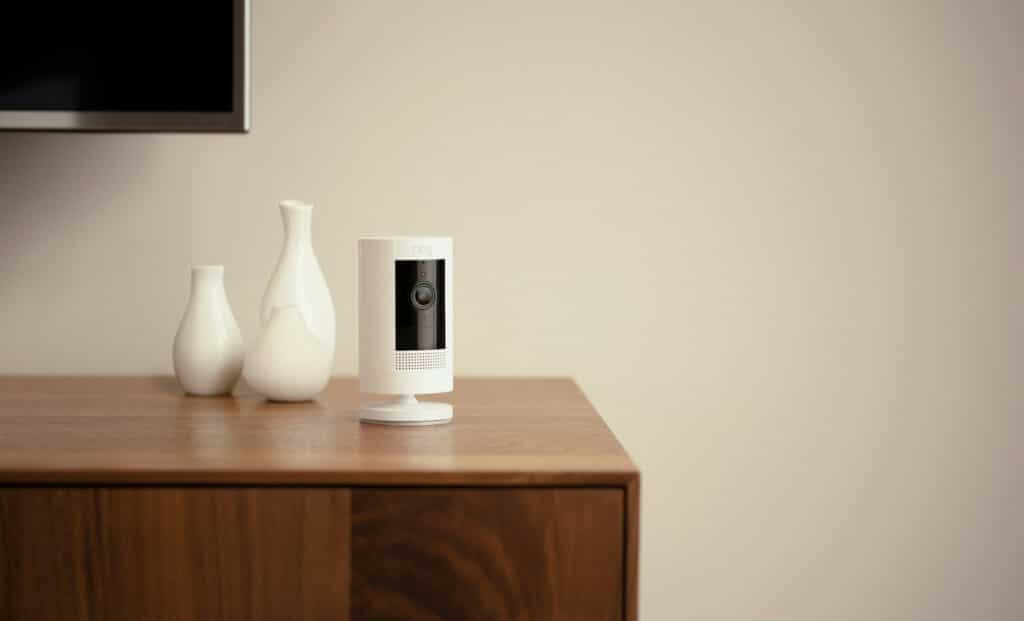
The Ring Indoor Camera stores the least amount of data (26%) of the top five most invasive devices. It collects similar data to the Nest Protect; including, in particular, both live audio and video recordings along with interaction data.
Since the Ring Camera specialises in home security and safety, motion detection and video recording are necessary to allow it to carry out its main function. This means it may be one to avoid if you dislike the idea of a device that records everything that happens inside your home.
How to protect your data while using a smart home device
Our research shows that not only do popular smart home devices record a high volume of information, but the specific information that they collect gives them an unsettling understanding of who we are, what we look like, sound like and even our interests. This combined information, if compromised by hackers or leaks, could put your identity at risk.
To select a smart home product that suits your practical needs but doesn’t compromise your privacy requirements, it’s important to bear in mind why these devices collect the information they do. The more complex tasks a device can perform, the more data it needs to collect to work effectively. For example, although Alexa collects the highest amount of information on us, this is so that it can accomplish a vast range of home tasks from making phone calls to changing the room temperature.
If you want to take advantage of the benefits many complex smart home devices offer but are concerned about your data being compromised by hackers and cyber criminals, VPN expert Lasse Walstad recommends the following steps to reduce your vulnerability:
- Change the default name and password of your Wi-Fi
This ensures that your password is unique and strong, and therefore less likely to be compromised.
- Keep your device and router’s software up to date
To protect your home devices against potential threats, ensure that both they and your router have the latest updates installed. This will fix any bugs and vulnerabilities within the software that make them more likely to be compromised.
- Use Wi-Fi Protected Access 2
Enabling WPA2 will make your Wi-Fi highly resistant to hackers and cybercriminals, as it uses encryption and long passwords to further secure your network. You can enable it through your network settings; just select your desired network and change the properties to WPA2-PersonalWPA2.
- Use a VPN service
Installing a VPN will mean that your whole network, along with your devices that connect to your internet, will be protected. The best VPNs will conceal your device’s IP addresses, and encrypt your data, allowing you to use your devices safely and anonymously.
Sources and methodology
Based on authoritative product recommendation lists, TechShielder identified the top 50 recommended smart home products and used Amazon and Google review ratings to identify the ten most popular of these.
We analysed all publicly available documents relating to the data collection and use of each product, such as privacy, and developer policies along with app store documentation to determine which data points these devices collect.
Based on the number of data points collected across all devices we calculated the percentage of specific data points collected across the following categories to determine the most commonly collected data and the impact this has on device users’ privacy: personal data, data about online activity, data about the device itself, data about user files, data about the home, data about contacts, and live data.
Based on the number of data points collected across each device we calculated the percentage of information across all data points that each device collects to determine which devices collect the most data about their users.
- smarthomeinsider.co.uk
- uk.pcmag.com
- www.tomsguide.com
- www.amazon.co.uk
- Apps.apple.com
- eula.samsungiotcloud.com
- nest.com
- cnbj1.fds.api.xiaomi.com
- global.roborock.com
- www.philips-hue.com
- www.sonos.com
- www.tp-link.com
- www.vesync.com
- en-uk.ring.com
- Support.google.com
- policies.google.com
